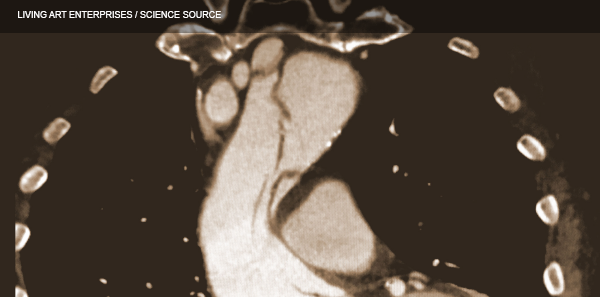
It used to be said that missing the clinical diagnosis of aortic dissection was “the standard” as it is rare and often presents atypically. The diagnosis rate of aortic dissection changed with the landmark International Registry of Acute Aortic Dissection (IRAD) study in 2000, which deepened our understanding of the presentation.1 Nonetheless, aortic dissection remains difficult to diagnose, with one in six missed at the initial ED visit.
Explore This Issue
ACEP Now: Vol 36 – No 11 – November 2017Herein lies the difficulty. Aortic dissection must be considered in all patients with chest, abdominal, or back pain; syncope; or stroke symptoms. Yet, we shouldn’t be working up every one of them, creating a resource utilization disaster. However, early, timely diagnosis is essential because each hour that passes from the onset of symptoms correlates with a 1 percent to 2 percent increase in mortality.
In this column, I’ll elucidate how to improve your diagnosis rate, without overimaging, by explaining five pain pearls, the concepts of “CP +1” and “1+ CP,” physical exam nuances, and how best to initially utilize tests.
The Five Pain Pearls of Aortic Dissection
- Ask the following three things of all patients with torso pain:
- What is the quality of pain? (The pain from aortic dissection is most commonly described as “sharp,” but the highest positive likelihood ratio [+LR] is for “tearing.”)
- What was the pain intensity at onset? (It is abrupt in aortic dissection.)
- What is the radiation of pain? (It is in the back and/or abdomen in aortic dissection.)
A 1998 study that reviewed a series of aortic dissection cases showed that for the 42 percent of physicians who asked about these three things, the diagnosis was suspected in 91 percent. When fewer than three questions were asked, dissection was suspected in only 49 percent.2
- Think of aortic dissection as the subarachnoid hemorrhage of the torso. Just like a patient who presents with a new-onset, severe, abrupt headache should be suspected of having a subarachnoid hemorrhage, if a patient describes a truly abrupt onset of severe torso pain with maximal intensity at onset, think aortic dissection.
- If you find yourself treating your chest pain patient with IV opioids to control severe colicky pain, think about aortic dissection.
- Migrating pain has a +LR of 7.6.1 In addition to the old adage, “Pain above and below the diaphragm should heighten your suspicion for aortic dissection,” severe pain that progresses and moves in the same vector as the aorta significantly increases the likelihood of aortic dissection.
- The pain can be intermittent as dissection of the aortic intima stops and starts. The combination of severe migrating and intermittent pain should raise the suspicion for aortic dissection.
Painless Aortic Dissection
While IRAD reported a painless aortic dissection rate of about 5 percent, a more recent study out of Japan reported that 17 percent of aortic dissection patients had no pain.3 These patients presented more frequently with a persistent disturbance of consciousness, syncope, or a focal neurological deficit. Cardiac tamponade was more frequent in the pain-free group as well.
The Concepts of “CP +1” and “1+ CP”
The intimal tear in the aorta can devascularize any organ from head to toe, including the brain, heart, kidneys, and spinal cord. Thus, 5 percent of dissections present as strokes, and these certainly are not the kind of stroke patients who should be receiving tPA! An objective focal neurologic deficit in the setting of acute, unexplained chest pain (CP) has +LR of 33 for aortic dissection, almost diagnostic. Some of the CP +1 phenomena to think about include torso pain, cerebrovascular accident, paralysis, hoarseness (recurrent laryngeal nerve), and limb ischemia.
Pages: 1 2 3 4 | Single Page





One Response to “How to Diagnose Aortic Dissection Without Breaking the Bank”
November 26, 2017
EricVery well written article on dissection. I especially like the thought process of thinking of it as the subarachnoid hemorrhage of the torso- really helps to remember those 3 questions.